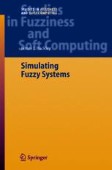Search
Search Results
-
Optimizing a Production Line
The simple production line considered in this chapter is shown in Fig. 20.1. This problem has been adapted from an example in [1]. This situation is...
-
Queuing I: One-Step Calculations
In this chapter we show situations where simulation can produce the same results as fuzzy calculations which employ the extension principle. We argue...
-
Simulation Programs
In this chapter we present some of the GPSS programs used in Chaps. 9–26. We had to omit many programs in order to keep this chapter. less that 20...
-
Summary and Conclusions
The first objective of this book is to explain how many systems naturally become fuzzy systems. The second objective is to show how regular (crisp)...
-
Control of Communication Networks Using Infinitesimal Perturbation Analysis of Stochastic Fluid Models
Managing and operating large scale communication networks is a challenging task and it is only expected to get worse as networks grow larger. The...
-
Robust Controller Design for AQM and $\mathcal{H}^{\infty}$ -Performance Analysis
Active Queue Management (AQM) has recently been proposed in [1] to support the end-to-end congestion control for TCP traffic regulation on the...
-
An Introduction to Nonlinear Fault Diagnosis with an Application to a Congested Internet Router
We aim at extending a recent linear theory on fault diagnosis [8, 9] to nonlinear systems by utilising, like Staroswiecki et al. [39], and Diop et...
-
Position and Force Tracking in Bilateral Teleoperation
A teleoperator is a dual robot system in which a remote slave robot tracks the motion of a master robot, which is, in turn, commanded by a human...
-
On the Optimization of Load Balancing in Distributed Networks in the Presence of Delay
Distributing the total computational load across available processors is referred to as load balancing in the literature. A typical distributed...
-
State-Space Models for Control and Identification
In the last two decades, design and performance evaluation of efficient congestion control methods for packet-switching computer communication...
-
Machine Shop I
The queuing system in this chapter is shown in Fig. 11.1. This application was adopted from a problem in ([1], p.594). We continue this problem in...
-
Inventory Control II
This chapter continues the inventory control problem studied in the previous chapter. The new system is shown in Fig. 17.1. We have added two things...
-
Project Network Model
The project network diagram is in Fig. 26.1. This problem is modelled after an example in [2]. The project consists of various jobs that must be...
-
Queuing II: No One-Step Calculations
In this chapter we will study the fuzzy system shown in Fig. 5.1 now reproduced as Fig. 9.1. This example was adapted from an example in [1]. The...
-
Extremal Properties of Random Structures
The extremal characteristics of random structures, including trees, graphs, and networks, are discussed. A statistical physics approach is employed...
-
On the Analysis of Backtrack Proceduresfor the Colouring of Random Graphs
Backtrack search algorithms are procedures capable of deciding whether a decision problem has a solution or not through a sequence of trials and...
-
Attacks and Cascades in Complex Networks
This paper reviews two problems in the security of complex networks: cascades of overload failures on nodes and range-based attacks on links....
-
Tomography and Stability of Complex Networks
We study the structure of generalized random graphs with a given degree distribution P(k), and review studies on their behavior under both random...
-
Topology, Hierarchy, and Correlations in Internet Graphs
We present a statistical analysis of different metrics characterizing the topological properties of Internet maps, collected at two different...
-
The Small World Phenomenonin Hybrid Power Law Graphs
The small world phenomenon, that consistently occurs in numerous existing networks, refers to two similar but different properties — small average...
